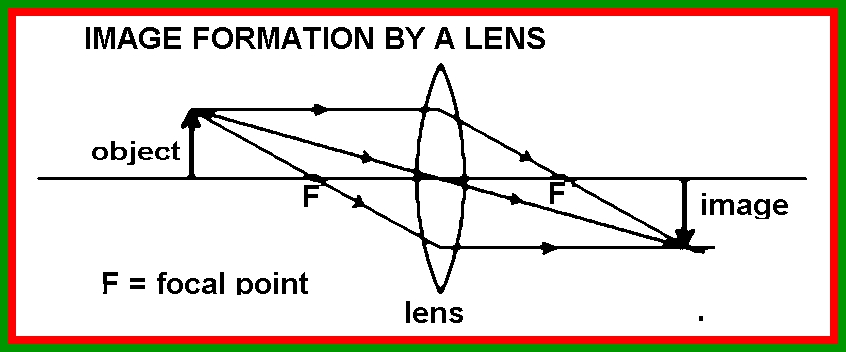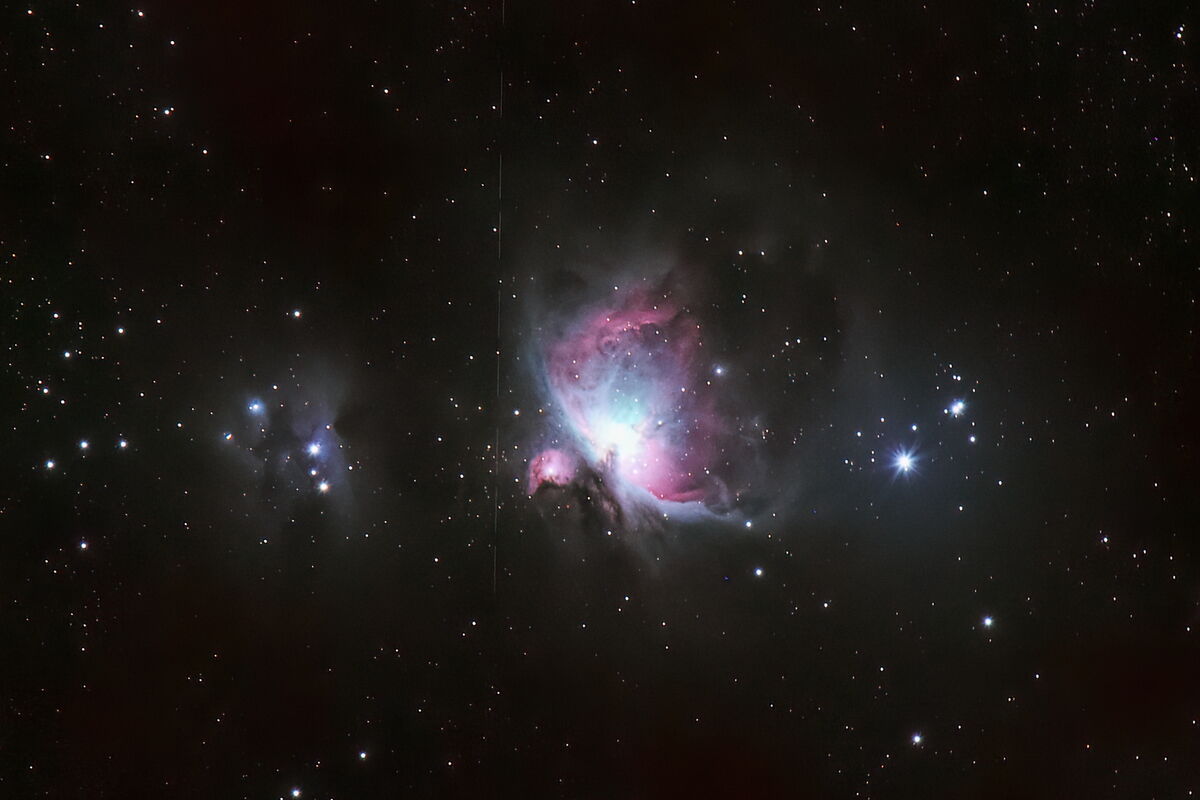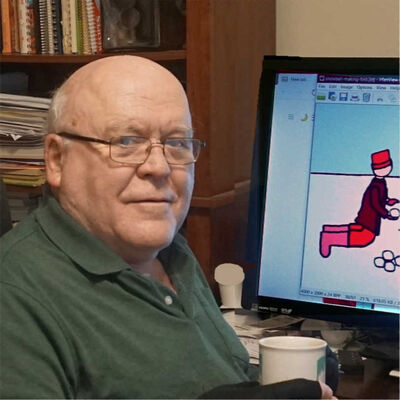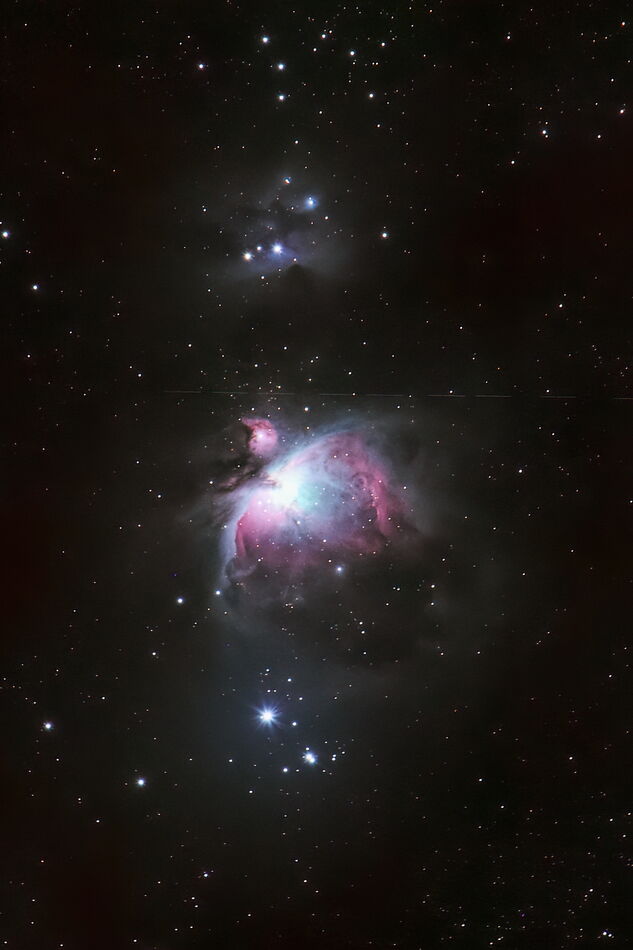A wintertime favorite
Dec 22, 2022 10:01:47 #
I couldn't resist. Took the R6 out with the Tamron 150-600mm G2. 600mm @f10, 9x20sec, ISO 12,800, processed in Canon DPPV4, Nebulosity v2.2.1, and Topaz Studio v1.14.5. Tracking with the trusty iOptron SkyGuider Pro.
Dec 22, 2022 10:19:02 #
Dec 22, 2022 10:44:24 #
OneShot1 wrote:
Excellent and beautiful. (I'd clone-out the airplane track.)
I'm not sure how to do that. I already cropped a much more obnoxious airplane. They and satellites seem to fly right through Orion from my location, grrr.
Dec 22, 2022 20:10:44 #
That lens does well. You don’t do any calibrating? Even with only 9 images, I bet they would come out.
ISO 12800, that camera does well too.
ISO 12800, that camera does well too.
Dec 22, 2022 21:38:49 #
Europa wrote:
That lens does well. You don’t do any calibrating? Even with only 9 images, I bet they would come out.
ISO 12800, that camera does well too.
ISO 12800, that camera does well too.
I haven't calibrated this lens since I got it. It seemed to work pretty good. The low light capabilities is why I picked it over an R5 even with only 20mp.
Dec 22, 2022 21:40:25 #
alberio wrote:
I haven't calibrated this lens since I got it. It seemed to work pretty good. The low light capabilities is why I picked it over an R5 even with only 20mp.
Sorry not calibrate the lens, use bias/darks/flats to calibrate your pix.
Dec 22, 2022 21:45:16 #
Europa wrote:
Sorry not calibrate the lens, use bias/darks/flats to calibrate your pix.
I'm not sure how to do that. I have tried to keep my imaging as simple as possible due to back issues the last three years. I even had to sell my C8 HD Hyperstar and ASI294 because it was getting to much to setup, so I've downsized even more.
Dec 23, 2022 14:04:39 #
alberio wrote:
I'm not sure how to do that. I already cropped a much more obnoxious airplane. They and satellites seem to fly right through Orion from my location, grrr.
Adobe Lightroom would work well in this capacity.
Better a great Christmas image regardless!
bwa
Dec 23, 2022 15:26:41 #
bwana wrote:
Adobe Lightroom would work well in this capacity.
Better a great Christmas image regardless!
bwa
Better a great Christmas image regardless!
bwa
Thanks
Dec 23, 2022 23:07:41 #
alberio wrote:
I couldn't resist. Took the R6 out with the Tamron 150-600mm G2. 600mm @f10, 9x20sec, ISO 12,800, processed in Canon DPPV4, Nebulosity v2.2.1, and Topaz Studio v1.14.5. Tracking with the trusty iOptron SkyGuider Pro.
Just a few days ago, we had another person posting the nebula in Orion. I do like you shot, too, but you might benefit by reading that thread.
https://www.uglyhedgehog.com/t-760489-1.html
Note that telescopes do a job on the orientation of the image, so when you are showing a well-known object such as these two, M23 and M24, it is good to re-oritnet your image, so it matches the orientation that is generally accepted by astronomers. See my note which is about 2/3 of the way down the thread linked to above. --Richard
Dec 24, 2022 01:56:48 #
profbowman wrote:
Just a few days ago, we had another person posting... (show quote)
But it would only be that orientation in the northern hemisphere...
bwa
Dec 24, 2022 08:48:01 #
bwana wrote:
But it would only be that orientation in the northern hemisphere...
bwa
bwa
BWA, your point is well taken. However, I was not referring to how the Orion Nebula might appear when viewed through a telescope and camera. There is always some arbitariness to that. What kind of mount is being used for the telescope--equatorial or altitude-azimuth. Another variable is how the camera oriented to the telescope--along the major axis of the scope or perpendicular to it. And then there is the question of where the celestial object is relative to the Earth.
So, for these well-known objects, there is usually a standard compass orientation just as there is for maps although for astronomical images East and West are usually switched because that is how humans see the sky.
One reason for this standardization is so that one photo can be compared to another over the passage of time and simply between two different telescopic set-ups.
And don't forget that the view through a pair of binoculars is different than the view through a telescope. Binoculars usually have prisms in the light path so that terrestrial objects appear upright as we usually see them. Telescopes do not have prisms since that would just be one more optical element to absorb some of the feeble light from distant objects.
Telescopes and cameras both invert their images of objects. However, since the processors or optics re-invent the images before the images are shown on our viewfinder or the LCD at the back, we often forget this fact which any film photographer would definitely remember if they developed film and prints themselves.
BTW, here is how the European Southern Observatory located in the northern desert of Chile usually presents the Orion Nebula.
https://www.eso.org/public/images/eso1723a/
I am not trying to pick on any photographer, but I am trying to help us be at least amateur scientists. Oh, and I have noticed on UHH's participant info that BWA is from Canada, and Alberio is located in Colorado. --Richard
Dec 24, 2022 09:49:20 #
profbowman wrote:
BWA, your point is well taken. However, I was not ... (show quote)
Now you've got my brain thinking about the way an object is viewed through a camera lens. I already knew telescopes would change the orientation, but wasn't aware of that being the case with camera lenses, mainly you always see the subject through the viewfinder in a correct orientation. I'll have to study the light path through a camera lens a little more. Thanks for the info. I've always wondered which is the proper view of Andromeda, as I've seen it presented many different ways.
Dec 24, 2022 10:14:04 #
profbowman wrote:
BWA, your point is well taken. However, I was not ... (show quote)
Is this better? I also wasn't particularly interested in the proper orientation, rather how well the camera/lens performed for a rank amateur.
Dec 24, 2022 12:06:55 #
alberio wrote:
Now you've got my brain thinking about the way an object is viewed through a camera lens. I already knew telescopes would change the orientation, but wasn't aware of that being the case with camera lenses, mainly you always see the subject through the viewfinder in a correct orientation. I'll have to study the light path through a camera lens a little more. Thanks for the info. I've always wondered which is the proper view of Andromeda, as I've seen it presented many different ways.
BWA, here is a sketch for the image formation from a single double convex lens where the object is further away from the lens than is the focal length of the lens. All camera lenses are some sort of take-off from this with more than one element to reduce chromatic aberration and spherical aberration and other "defects" of a single lens.
Try using a simple magnifying lens in front of a light bulb or other light source with a white piece of cardboard or paper on the other side of the magnifying lens. Move the paper back and forth to focus the image on it. You could try moving the lens back and forth to focus the image while keeping the light source and paper in fixed locations. This is what our cameras do, but it is harder for amateurs to do.
You can measure the focal length of the magnifying glass to a fairly accurate amount by measuring the distance between the lens and a piece of paper on which you have focused the Sun to a bright dot on a clear day.
Have fun. --Richard

If you want to reply, then register here. Registration is free and your account is created instantly, so you can post right away.




